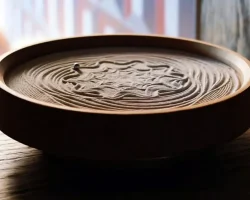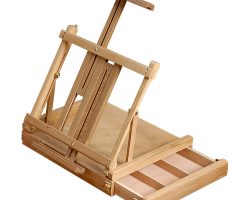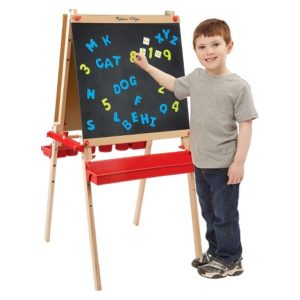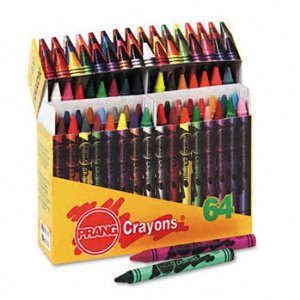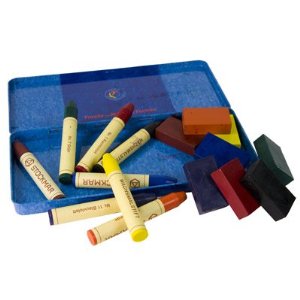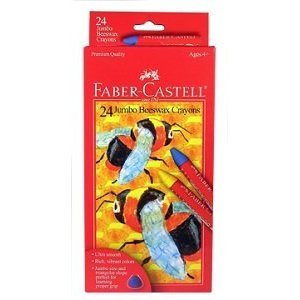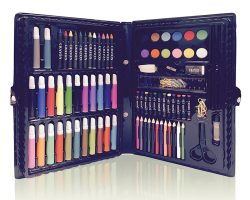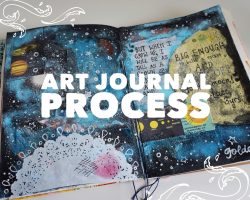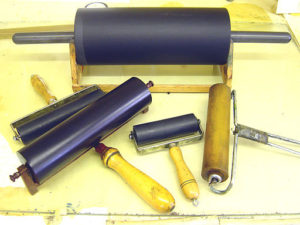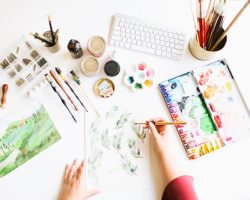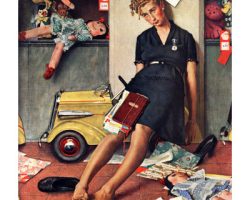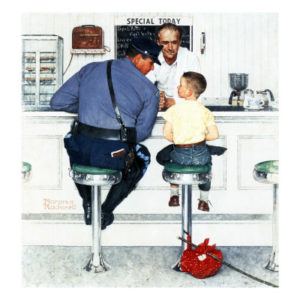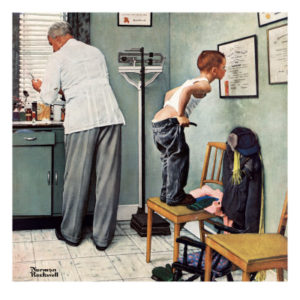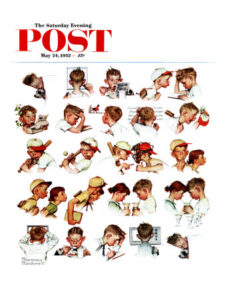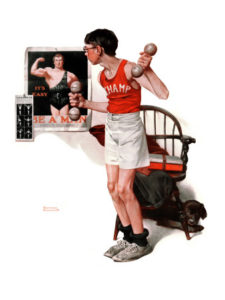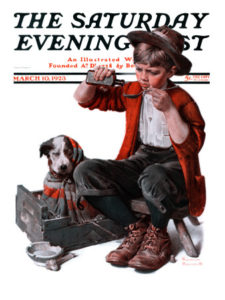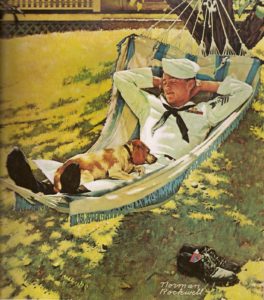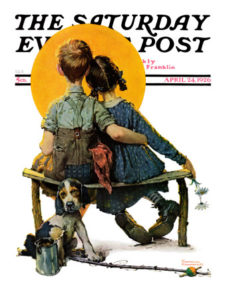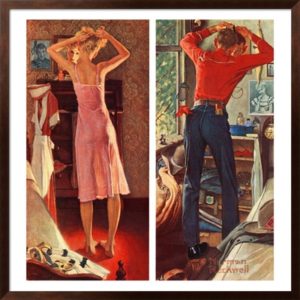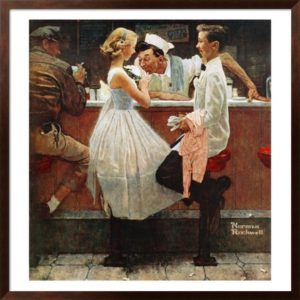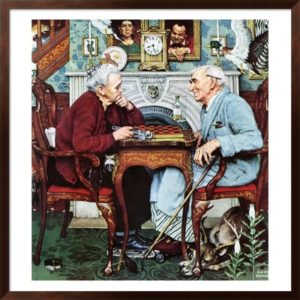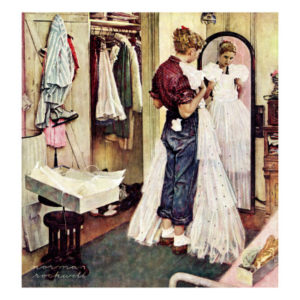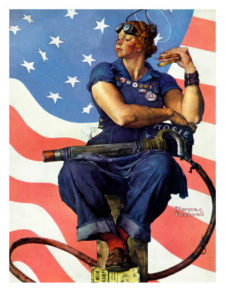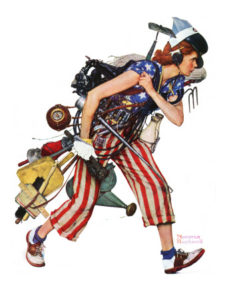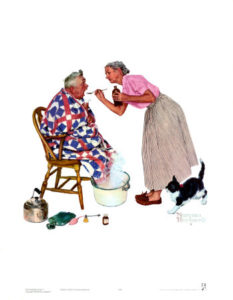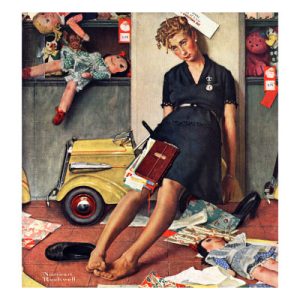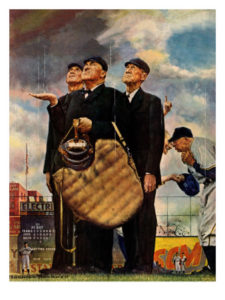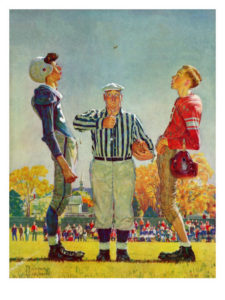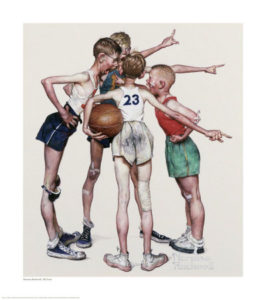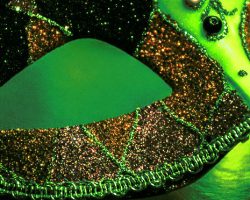How to Produce Environmentally Sustainable Theater
There’s a lot of waste in the theater. That’s hard to believe (with our budgets!), but it’s true.
An awful lot of every set ends up in the trash, a lot of electricity goes into lighting a show and into cooling an auditorium, and those are just the OBVIOUS problems.
Honestly – beyond usual thriftiness – I hadn’t thought too much about the unique problems of creating sustainable theater until I attended a recent scenic design seminar in New York City. There are so many theaters there that they are already developing a healthy “green” scene: Broadway Green Alliance is getting out the word to groups like mine and to the theaters of Broadway and off-Broadway. (Or, in my case, to off-off-really-an-air-trip-far-off-Broadway.)
It got me thinking.
So as a theater designer I’m cleaning up my act (bad pun). I’m also passing the word on with this Lens on greenifying the stage. You too (imagine Uncle Sam pointing his finger at you) can help make stage productions “greener.” Help save the planet!
And probably save your theater some cash too.
Here’s how…
Advice to Theater Producers and Venue Managers
There are many ways to make your theater “greener” and more energy efficient – most of which will also save you money in operations. (Virtue is rewarded!) One of the first steps is to create a team to study how to go greener.
1. RECYCLE: It’s becoming standard practice to reuse and recycle paper programs. Maybe there’s some way to avoid them entirely? (I know one theater that scrolled the credits on a monitor in the lobby… and this video aproach complimented the show too.) Use a thinner ticket stock – or go “ticketless”. Lots of savings in paper there!
Likewise you can choose paper towels for the restroom that have a high recycled material content (just as with any other paper product).
Look into all the common forms of “greenifying” a business: recycle paper and other trash, use recycled paper for business purposes; reduce energy usage. Set out recycling bins for your audience so you can keep those refreshment containers out of the landfill. Look carefully at what disposable glasses etc. you use for event catering. Bottled water, for instance, is an infamous waste of materials and energy: how about pouring good ol’ fashioned glasses of (filtered) water instead?
2. MAINTAIN A GREEN BUILDING: by… maintaining it!
Clean air filters and well-cared-for heating and air conditioning equipment make a big difference to the system’s efficiency. Good weatherstripping at windows and doors, working automatic door closers on vestibules, and USING those vestibules… these are all little air leaks that add up fast. And adjust thermostats sensibly. (One theater I know has to hand out blankets to its patrons.)
Make sure that water leaks are caught early and fixed. Watch your water use for irrigation too.
Wherever possible change out incandescent lamps for more energy efficient fluorescent or, better still, LED lamps. Put house lights on dimmers and consider motion detector switches for areas that are often empty… yet where someone often forgets to turn off the light.
Use environmentally sustainable cleaning products.
3. REPLACE GREENER: Routinely replace incandescent light bulbs with LEDs. Repaint next time using low-VOC (less off-gassing, less-smelly) paints. Choose water-saving toilets and lavatories as replacements.
And when you up-grade your air conditioning and heating – or your water heaters or dishwashers – choose energy efficient equipment.
4. REMODEL OR BUILD NEW, GOING GREENER: If you plan exterior work to an existing building, consider adding extra insulation and a better grade of doors and windows to conserve more energy. Think about issues of solar heat gain and shading. Would shady porches, awnings, or well-located trees help your air conditioning bills? Can you make your roof or building a lighter color, to reduce solar gain?
Whatever your plans for construction, consider using greener, sustainable materials, less toxic materials and methods, and sourcing them locally.
If you’re planning new construction, discuss sustainability with your architect. At the very least, you’ll want to increase insulation!
Look into the various established sustainable building programs like the US Green Building Council, LEED, and Energy Star. These organizations can give you a great deal of information. Even if you don’t follow all their recommendations, you can get ideas to help “greenify” your facility, some as simple as adding a bike rack. As you plan your new building, just being mindful of which way the glass faces can make a big difference.
5. LANDSCAPE GREENLY: Use landscaping to replace some hard-surfaces outdoors. (We all like oxygen, right?) Can you make some of your paving permeable to rainwater? Or to collect rainwater for irrigation?
Then take care of your plants using sustainable care practices. Choose native plant species that are naturally more pest resistant and need less supplemental water, species chosen to fit your particular conditions. Make sure your sprinklers work properly. Mulching mowers, non-oil-based fertilizers, avoiding pesticides and herbicides… all good citizen ideas! And add that bike rack, huh?
This is a developing conversation and today there aren’t many books on the topic. This one looks pretty comprehensive and thorough (if a bit pricey) and would probably save you its cover price in… less than a month.
Links to Green Info
There are some great ideas out there – take a look!
The Broadway Green Alliance
More ideas and suggestions for going green onstage.
Ecotheater “How to Go Green”
Excellent discussion of green theater issues, including construction and the LEED building and Energy Star energy programs. Also a serious look at the energy use of the show itself and all the issues of waste and toxic materials in sets, costumes, and props. A MUST READ.
The Green Theater
50 things to do to go greener.
Berkeley Rep – “Going Green”
Some good suggestions here.
Minnesota Theater Alliance
2012 the first theater sustainability conference.
Advice to Theater Designers
There are two ways (well, two and a half) that you, as a designer, can help make theater more environmentally sustainable. The first is to clean up your own act, to run a greener design studio and practice. The second is to design in a more environmentally conscious way – to make greener choices. The “half”? Help the people who work with you – the scenic carpenters, painters, costumers, lighting crew, and workshops – make greener choices too.
GREENER PAPERWORK: Use recycled paper, print on both sides, and use inks that come with less packing materials. Will soy-based ink work for you? When possible, try to view drawings, scripts, and other information on a screen – and not print it. When you do use paper, recycle it and recycle plastic and metal trash as well.
RUN A GREENER STUDIO: Always consider the amount of packaging involved before you buy office, kitchen, and art supplies. Think through your own packaging and shipping practices too.
Conserve water and avoid those wasteful little disposable bottles of water! All those snacks and lunches involve packing and shipping too: try to reduce both with your choices.
Of course, you’ll want to light your studio as much as possible with daylight – it’s the best colored light anyway and free too! (There’s a reason painters love north-facing garret windows.) Supplement daylight with lamps using LEDs (best energy savings) or fluorescent (next best), instead of incandescent lamps that waste so much energy as heat. This will help keep your air conditioning bills down too. While you’re at it, keep your thermostat setting at something sensible – not too hot or cold. Try wearing a sweater or using a fan.
Oh, and by the way, you DO know it’s unsafe to eat or drink in studio with all those toxic art supplies, right?
GREENER (or less toxic) ART MATERIALS: Try to use recycled or upcycled papers and cardboards etc. whenever possible and choose sustainable materials whenever you can. Reduce waste. And cut waaay back on chemicals – both in your design work and in your housekeeping. Paints and adhesives can be very toxic. In studio “housework” use “green” cleaners and avoid insect sprays etc. Dispose of paints and other chemicals safely. (And remember to protect yourself from toxins too, some of this stuff is very dangerous.) Be sure to have proper ventilation and, when needed, use respirators.
Links to Info on Material Toxicity
Arts and Media – “Toxic Art Materials”
What every artist should know.
The Healthy Artist Guide
With a handy spreadsheet of specific art materials and safer alternatives.
Daniel Smith “Using Art Materials Safely”
Useful advice – especially for children and art.
For Lighting Designers…
And Sound Designers (and their crews)
Obviously your share in the show is THE major energy user. Any reductions you can make in what power is required will be multiplied by X number of shows a week! So lamp and equipment choices and energy-saving procedures are important.
DESIGN GREEN: Think about energy usage as you design show lighting. LEDs are MUCH more energy efficient than incandescent light sources. Also cooler – which impacts air conditioning requirements for the venue. (Actors will be cooler too!) And just, you know, using fewer lights or reducing light intensity would help. (Less so with dimming as lights get inefficient.) But lower volume sound means lower energy use. Advocate for replacing incandescent lighting instruments with LEDs. Design requirements and stage lighting equipment are the biggest areas for potential energy savings.
CLEAN FOR GREEN: Keep dimmers, lighting instruments, and all control gear clean and dusted so they run most efficiently
RUN GREEN: Shut down dimming gear at the source after rehearsals and performances. Likewise, power-down LED power supplies and moving heads if it will be an hour before using them again.
RECYCLE: If you can, use BGA’s Gel Project to donate and reuse lighting gels. Otherwise… ask around, many theaters share and someone in your area may be thankful for that slightly-wrong-color-gel that got ordered. Avoid waste, of course, when cutting gel.
For Costume, Hair, Wig, and Makeup Designers…
(And crews, of course)
Costume designers and others who work with what I’ll call “soft goods” face some of the same issues as set and lighting folks… running a green studio and choosing greener materials and methods in designing and constructing their part of the show.
GREEN STUDIO / GREEN DESIGN: Try to minimize energy usage and maximize recycling in your day-to-day work. Your design choices can minimize fabric waste and call for less toxic methods – especially when dyeing – and can require more sustainable materials. Consider greener fibers and manufacturing processes (and consider the sweatshop issue too!). Shop local, to minimize shipping.
RECYCLE: Shop used and thrift stores. And, when the show closes, pass on your costumes to other theaters or back to thrift stores. Unused fabrics or trim etc. can help a poorer theater.
GREENER CHEMICALS: If nothing else, just creating costumes than can be water-washed rather ones that require dry cleaning will make your show instantly more sustainable. A lot of nasty chemicals in dry cleaning!
Limit use of dyes, bleaches, and other chemicals used on fabric, hair, wigs, and makeup. Use pump hairsprays.
For Prop Designers…
You work with EVERYTHING – every kind (and toxicity) of material and process. For your own safety, you really need to understand the dangers and try to minimize them. As a bonus, you get to help save the planet.
Read the sections for the other designers and the scene shop too.
CHOOSE GREENER: materials, adhesives, and paints etc. Go for the sustainable, the recycled, and the low or nontoxic as much as possible. You already know all about thrift store shopping!
USE GREENER: Be careful to follow safety guidelines when using toxic materials and make sure you have great ventilation.
Specifically for Set Designers…
There are many ways you can influence your show to make it more sustainable. in fact, YOU SHOULD, because the set is one of the biggest users of material and energy onstage.
Here are a few suggestions.
1. THAT GREENER STUDIO? Drawings are a great place to recycle and to choose more sustainable materials. Try using recycled paper, print on both sides, and use inks that come with less packing materials. Whenever possible, try to view drawings and other information on a screen – and not print it at all.
When building models, try up-cycling packing cardboard, choosing cardboard instead of foam-core board or choosing pulp-board instead of illustration board. And use plain ol’ white glue instead of other chemical compounds when possible. Recycle your used paper and cardboard – even old models!
2. DESIGN GREEN: when you can, plan your scenic design to use recycled and upcycled materials. Always design around material sizes (like 4′ x 8′ plywood) so there’s less cutting and waste. Check if there’s something in the theater’s stock that will work before building new. Stock flats and platforms are a great form of recycling!
Research building materials – what’s your greenest choice? Now, this can get complicated: many conflicting factors come into “greenness”, like shipping distance versus sustainable sourcing, or low emissions or toxicity versus maybe… your budget. When using fabrics, use the same care and consideration as “green” costume designers would.
3. BUY GREEN: Check thrift stores and places like Craig’s List for what you need.
If you happen to be in the NYC area, the Broadway Green Alliance suggest shopping at Build-It-Green, Film Biz Recycling, or Materials-For-The Arts. Around my own Dallas-Fort Worth area and I’m sure others, Habitat for Humanity Restores sell “excess” building products. Look at building salvage places, of course. And nothing’s greener than rescuing something left out for the trash! (Assuming that’s legal by you.)
4. BUILD GREEN: More on this in that (up-coming) section on Building, but as a designer plan to use existing or stock pieces as much as possible and consider using recycled and upcycled material. Try not to require particularly toxic materials and procedures. Aniline dyes, for instance, are seldom used now because of their toxicity compared to other paints and stains, whereas white glue is an ecofriendly adhesive compared to its rivals.
As a designer you have a lot of influence over the materials required by your design… and maybe a little persuasion about methods and materials in the building of it too. I suggest encouraging sustainable paints and building methods.
5. GREEN-CYCLE OLD SETS: Don’t just trash it! Give your set away. Or give its broken-down materials away as salvage. Poorer theaters would be glad of a lot of your stuff. Recycle what can be recycled. And plan to save things from this set for the next one.
Advice for Scene Shops
There are many ways to cut waste and to promote recycling in building sets. Talk about the issue with the set designer and see where – together – you can make minor changes to make major savings.
Beyond cost savings, THE great advantage to greener shop practices will be a safer, less toxic environment for theater carpenters and painters. Forget the Earth a minute… why pollute your body?
CUT WASTE: Plan material cuts to waste as little as possible. Likewise, that off-cut of lumber in the trash might be perfect for this short little use over here. This sort of thrift comes naturally in a well-run shop, so Congrats! You’re already pretty green.
When buying construction materials, where possible opt for those that contain post-consumer waste, that are themselves recycled. And (as much as you can) try to avoid nasty stuff like formaldehyde and the chemicals used to pressure treat lumber for outdoor use.
REUSE AND RECYCLE: Recycle materials from previous sets and build for this set in ways that can be used for the next. Nothing is greener (or more thrifty) than using a stock flat. Or, if you can’t use it again yourself, some other theater can. Let the community know when you have excess or salvaged material – they’ll often take it off your hands. Recycle as much as possible.
Whenever possible consider used and up-cycled materials and salvaged doors and windows etc. Shop salvage yards and places like the Habitat for Humanity Restores for not-quite-new materials.
USE GREEN MATERIALS: Do research on what your material choices are. This can get complicated and involve a lot of trade-offs, but the ideal would be a renewable, sustainable material that’s sourced locally. The sad truth is that often the cheapest stuff, like that thin plywood that fits your budget, for instance (lauan, cough), is deeply unsustainable (pure rolled-up-rainforest), and involves a lot of shipping. (The rainforest is a long way away after all.) And foams are BIG petrochemical-use products. Avoid them as much as you can.
Try streeeetching a material’s life. Can that carved “brick” foam be flipped over and reused, its back becoming carved “stone” for the next set? Two uses equals buying half as much foam. (The answer? Yes! I successfully reused foam brick from In the Next Room: the Vibrator Play as stone for The Beauty Queen of Leenane. it was kinda fun.)
CUT BACK ON CHEMICALS: Find the least toxic option. Good ol’ white glue, for instance, is more environmentally viable than most other adhesives. Try to minimize toxic and hazardous construction methods too. (For Pete’s sake stop melting plastics!) And when hazardous chemical fumes are unavoidable remember proper ventilation and respirators!
Be particularly careful with paints, dyes, and stains. Consider paints carefully. There are low emission, low VOC paints available – can you use them? And when disposing of old paints, it’s best to let them harden in their can into something inert rather than to throw them away wet and disperse-the-toxins-ish. (Not down the drain! Horrors!)
Links to Greener Building
What are the greenest choices when building that set?
Whole Building Design Guide “Use Greener Materials”
Recommendations for choosing materials.
EPA “Smart Building Material Choices”
The EPA… they oughta have a clue. (And also a warning about “greenwashing”.)
Rainforest Relief “Safe Sets”
Avoiding lauan in film and theater sets. Why and How.
Related Lenses
A few other places to check for information on saving resources or theater design. (Or both at the same time.)
Thrilled to Go Purple!
I’m thrilled to announce that this Lens has been honored with a Purple Star Award for good-itude… Thank you, Squidoo, so much!
I’m all the more excited because this kind recognition means more people will read this Lens.
Making theater as good for the planet as it is for people is a worthy goal – and one desperately needed. There really IS a lot of waste right now: I know of one absolutely beautiful theater set for A Christmas Carol that was simply tossed. This was a set that any pro or amateur theater or any church group would have jumped to own. Shoot! even the local mall would have grabbed it for a Santa’s Village. Thousands of hours of skilled labor and tens of thousands of dollars of material… into the dumpster.
Of course there is a funnier side to this sort of criminal waste: years ago, when another theater threw away tons of sand (because no kids’ playground might want it?), when the garbage truck came to empty the dumpster – it was the TRUCK not the dumpster that was lifted off the ground!
Ha! A joke we don’t want repeated, eh? Recycle.
Go Green!
